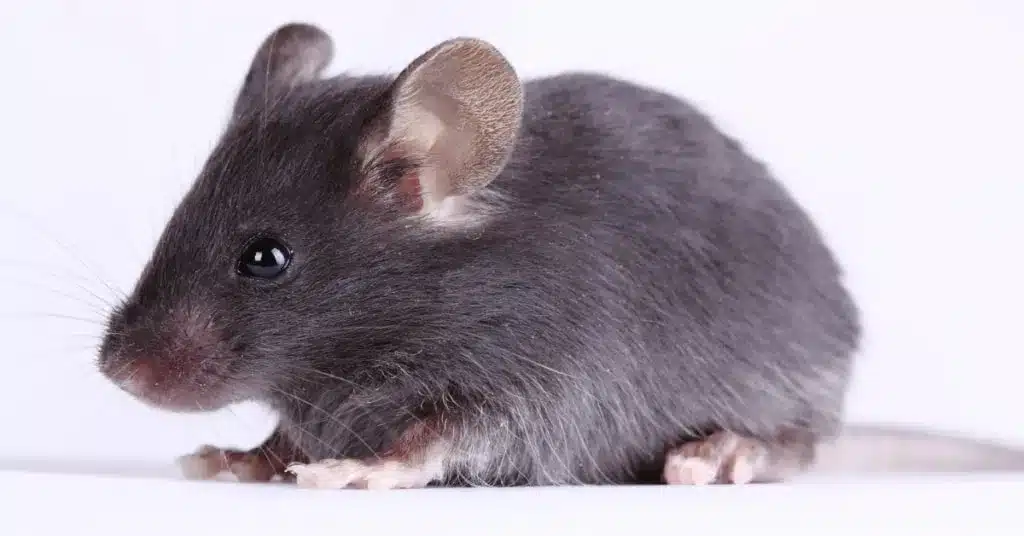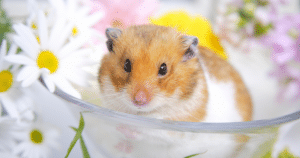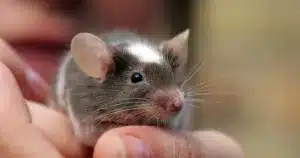A mouse cage may need to be larger than you originally thought. If you’ve owned small pets before, this won’t surprise you, but if you’re new to small pet ownership or are just considering mice, you may be shocked by how much space mice truly need.
Mice have unique needs and are very different from rats, too. In fact, caring for mice is somewhere in between caring for gerbils and caring for rats. And that’s true for how you house your pet mice, too.
For example, rats don’t necessarily need a deep layer of substrate for burrowing. Instead, they like to dig in a dig box and prefer to snuggle up in aerial hammocks and nests rather than underground. In comparison, mice love to create burrows underground, very similar to gerbils and many hamsters.
However, mice are similar to rats in that they’re skilled climbers. Whereas gerbils don’t require much climbing enrichment, ropes and climbing toys are essential for both mice and rats.
Learn more: Best Mouse Cages (US and UK)
How Big Does a Mouse Cage Need To Be?

Many sites and sources state that 10 gallons is enough space for two or even three mice, but most owners agree that this is just not enough space.
A standard 10-gallon tank has the dimensions of 20.25 x 10.5 x 12.63 inches, which is about 213 square inches of floor space. (That’s 51.43 x 26.67 x 32.08 cm or about 1,372 cm squared.)
In the UK, the minimum size requirements are as follows (we recommend following these in the US and elsewhere as much as possible, too):
- Minimum height: 19.5 inches (50 cm)
- Minimum floor space/footprint: 31.5 x 19.5 inches (80 x 50 cm); 614 square inches (4,000 cm squared) for two mice (we recommend adding at least 120 square inches for each additional mouse)
In terms of gallons, this would be at least 40 gallons of space.
Keep in mind that levels inside the cage don’t add to the floor space. To calculate the floor space of a cage, you just have to measure the width and length of the inside of the base.
What size bar spacing should a mouse cage have?
Another important consideration for mouse cages is the spacing of the bars. Mice can squeeze between the bars of many hamster and rat cages, making them unsafe for housing mice.
Deciding what bar spacing your mice need can be tricky because mice vary a lot in size. Some very large mice may be safely kept in a hamster or rat cage that has wider spacing. However, it’s always better to be safe than sorry.
In general, adult, average-sized mice need a cage with a bar spacing of 9.5 mm or less. Young or very small mice may need bar spacing of 6 mm or less.
How tall should a mouse cage be?
In addition to having enough horizontal floor space, a mouse cage needs to have the proper height. Mice enjoy climbing and exploring vertical space, so a short enclosure isn’t always ideal.
We recommend choosing a cage that has at least 15 inches (38 cm) in height. This provides enough depth for bedding and substrate, as well as some additional space for wheels, climbing, and exploration.
A height of 18 inches (46 cm) or more is even better, as long as you maintain the same footprint of horizontal floor space.
In the UK, the height requirement for ethically keeping mice is 19.5 inches (50 cm).
How deep does the base of a mouse cage need to be?
Many cages advertised for mice do not have deep enough bases. A mouse cage needs a sufficiently deep base so that mice have room to dig holes and tunnels, which is a natural instinct for them.
Mice that do not have deep enough bedding can get bored or be more timid. Deep bedding helps them stay entertained and feel more secure.
The depth of the tray in your mouse cage should ideally be about 6 inches (15 cm) or more. A tray that’s 5 inches (13-14 cm) deep can be used, but it’s not as ideal. Anything less than 4 inches isn’t suitable for mice.
Adapting a Cage for Mice
If you find yourself with a spare small animal cage that isn’t quite suitable for mice, you may be able to make some changes to the cage to make it safe for your pets. Here are some ideas.
Adding wire mesh to a cage for mice
If the bar spacing is too wide on the cage, you can adapt it by adding wire mesh as an extra guard. You’ll need to purchase wire mesh that has openings of ¼ inch x ¼ inch (6 mm x 6 mm).
Tip: Here’s some wire mesh that’s ¼ inch x ¼ inch.
Wire mesh is relatively affordable, but you’ll need some tools to cut it to size and attach it to the cage. Tools include wire-cutters with a flush edge and spring and possibly J-clips and J-clip pilers.
Using this method does have downsides, however. It can be tricky to make work safely, and it’s more difficult to attach toys, wheels, and water bottles to the sides of the cage this way.
It’s also harder to see your pets inside the cage, and if the cage has a side door, you may lose access to that.
Adding plexiglass to a cage for mice
If you find yourself with a cage that has perfect bar spacing but not a deep enough tray for burrowing, you can adapt it using plexiglass sheets.
This is a common method for both rat owners and mouse owners seeking to improve their pets’ bedding depth. It’s commonly called a “plexiglass tray” or a “perspex tray” for pet cages.
To create the tray, just measure the length and width of the base of your cage, and the height you want the plastic to come up to, to figure out what size your plexiglass sheets need to be.
You can find sheets of plexiglass online in various sizes, but you may need to cut them further to fit. You can use a simple plastic cutter to achieve this. You’ll need to create a base piece as well as the four sides of the tray.
(You may also be able to find a contracting or plastics store near you that cuts plexiglass to specific dimensions.)
Then, join the pieces of plexiglass together to form a tray using strong tape. Tape the corners together on the outside of the plastic so that your pets can’t chew it.
You can also add some adhesive, like silicone glue, between the edges of the pieces before you tape the tray together to make it more secure and waterproof.
Can You Keep Mice in a Tank?
You may be wondering: can you use a tank as a mouse cage? After all, mice need a deep space for digging and plenty of horizontal space. That sounds just like a 40-gallon breeder tank or even a 20-gallon tank.
The answer is yes, you can keep pet mice in a glass tank enclosure, and many mouse owners go this route. But there are some considerations to keep in mind if you do. (Read below for more info.)
Ammonia buildup in mouse tanks
The first issue with glass tanks for mice is that they don’t offer as much ventilation as barred cages. Ventilation is crucial for mice because their urine can lead to a buildup of harmful ammonia.
Ammonia is heavier than air, so it sinks to the bottom of the tank. When mice sleep or hang out at the bottom of the tank in the ammonia, they can develop serious respiratory distress. However, this usually isn’t a problem for attentive mouse-keepers, and it’s primarily a problem for breeders.
If you choose a tank for your mice, you will just need to make sure you’re changing the bedding frequently enough and removing soiled bedding as needed.
Hanging toys in a mouse tank
Another downside of using a tank as a mouse enclosure is that it can be harder to hang toys from the sides and ceiling.
You can buy or create a mesh top for the tank, which can allow you to hang some toys. However, mice enjoy having lots of hanging toys, both hanging from the ceiling and along the sides. We love to use these suction cup hooks to hang items along the sides of the tank.
Mouse Care is an Evolution
If you started out your mouse-owning journey with a less-than-ideal mouse cage, you’re far from alone.
Many of the most informed and ethical mouse owners started with a mouse cage that was too small or not right for their pets. After all, large pet stores and pet blogs actively promote cages for mice and other small pets that aren’t actually suitable for those pets.
Mouse care is an ever-evolving process, and you’ll continue to improve upon the care you provide as you learn more about your pets.







0 Comments